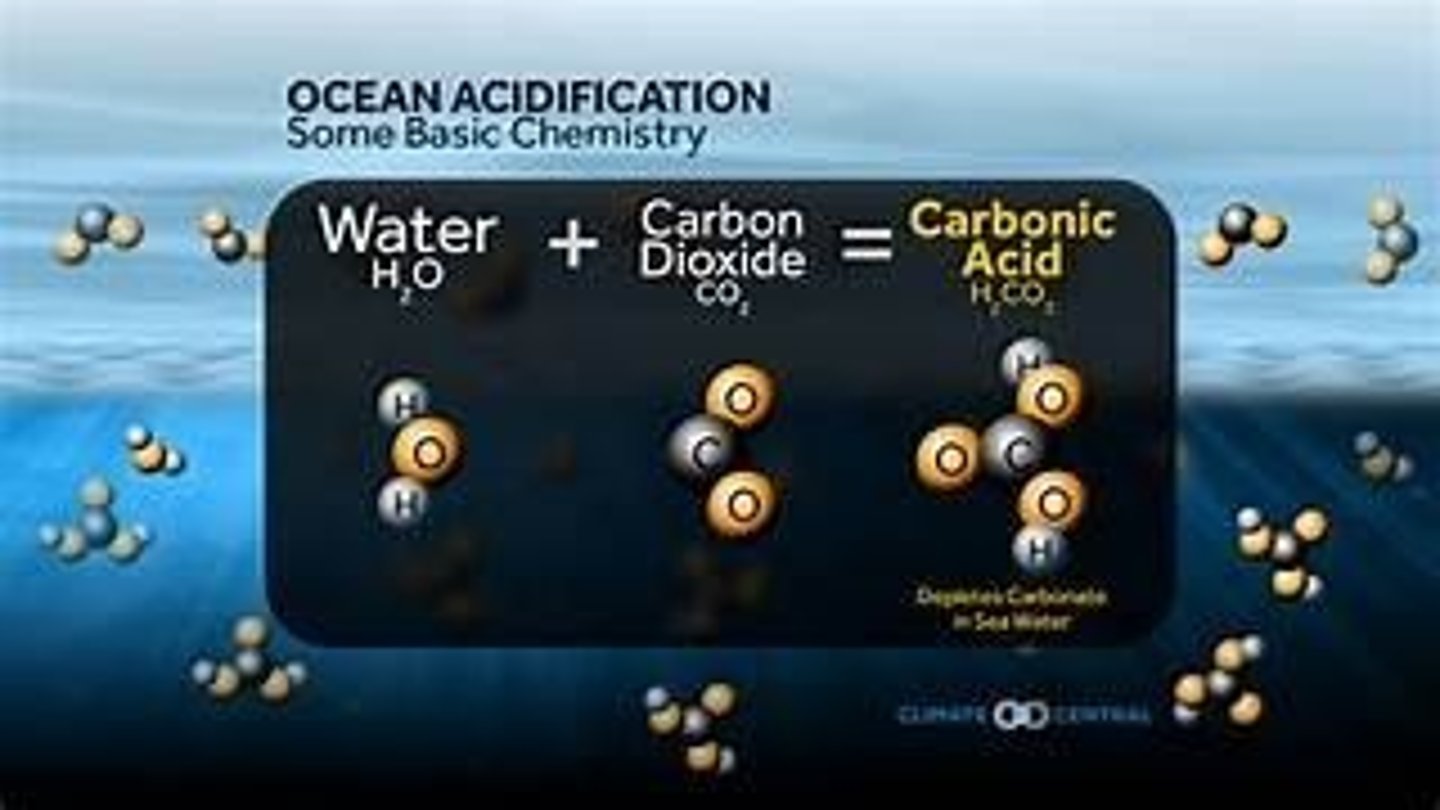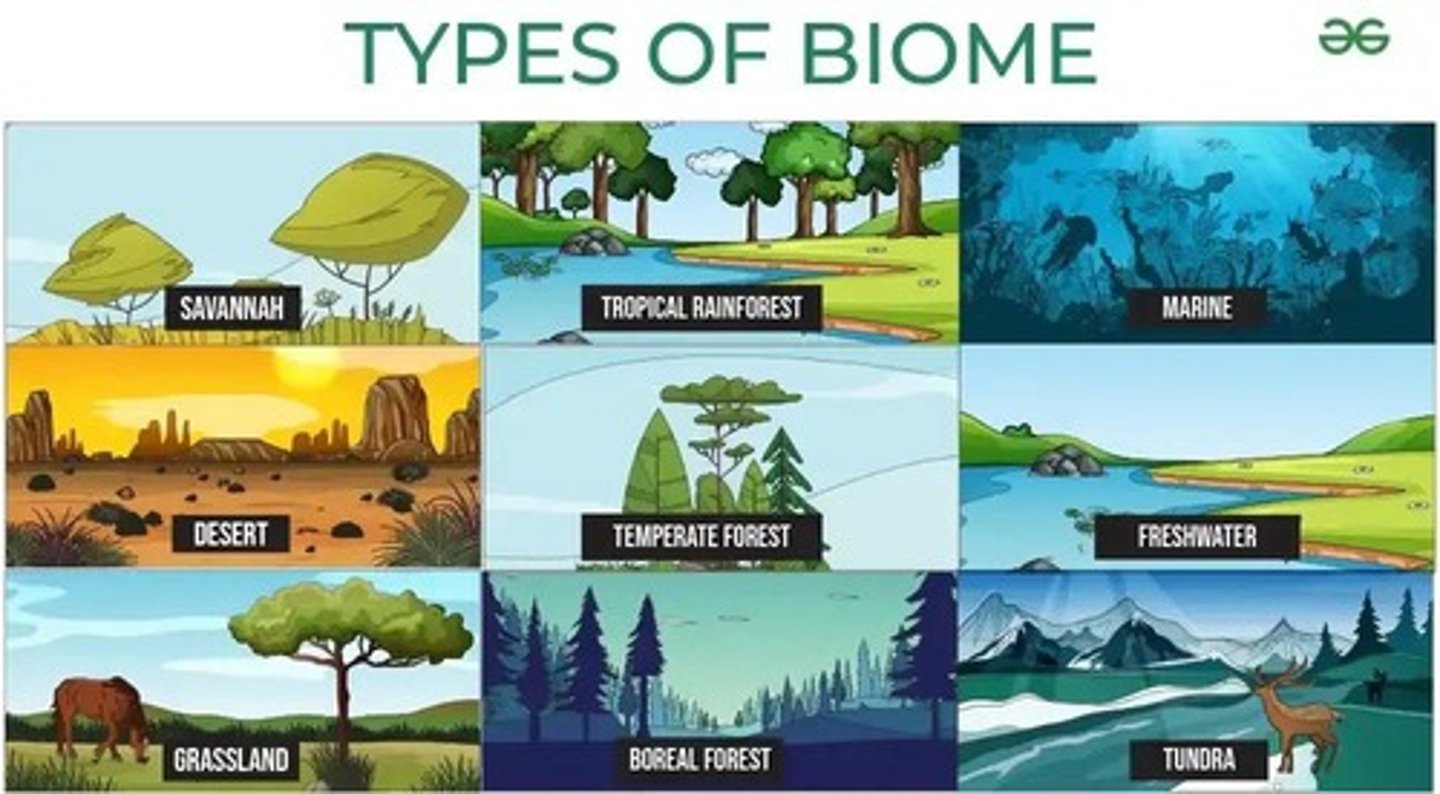Earth's Subsystems: Atmosphere, Hydrosphere, Geosphere, Biosphere
1/23
There's no tags or description
Looks like no tags are added yet.
Name | Mastery | Learn | Test | Matching | Spaced |
|---|
No study sessions yet.
24 Terms
What are the four subsystems of Earth?
Atmosphere, Hydrosphere, Geosphere, Biosphere.

What is the atmosphere?
The thin layer made up of a mixture of gases and particles suspended in the air that surround the Earth.
What are the main layers of the atmosphere?
Troposphere, Stratosphere, Mesosphere, Thermosphere, Exosphere.
What does the hydrosphere encompass?
All the water on Earth in all its forms: liquid, solid (ice), and vapor.
What is the cryosphere?
The frozen part of the hydrosphere.
What is acidification?
The process when something becomes more acidic, indicated by a drop in pH level below 7.

What is the geosphere?
The solid, non-living parts of the Earth, including rocks, minerals, and landforms.
What are tectonic processes?
Geological forces and movements that shape the Earth's crust, involving the movement of tectonic plates.
What are fluvial processes?
Actions and effects of flowing water on the landscape, including erosion, transportation, and deposition of sediment.
What is erosion?
The process of wearing away and removing material by natural forces.
What is transportation in the context of fluvial processes?
The movement of eroded materials from one place to another.
What is deposition?
The process where transported materials are dropped or laid down in a new location, creating new landforms.
What are aeolian processes?
Processes related to wind that shape landforms, such as the formation of sand dunes.
What does the biosphere encompass?
All living organisms, including plants, animals, and microorganisms, and their interactions with the physical environment.
What is a biome?
A large geographic region characterized by distinct climate, soil, and vegetation, influencing the types of animal species present.
What factors determine a biome?
Physical and chemical conditions of the soil, climatic conditions, vegetation, and wildlife availability.
What are terrestrial biomes?
Biomes present on land, including tropical rainforest, temperate forest, desert, tundra, taiga, grasslands, and savannah.

What are aquatic biomes?
Biomes present in water, consisting of freshwater and marine ecosystems.
What happens to light energy when it reaches Earth?
It can be reflected back into space, transmitted through an object, or absorbed and captured in photosynthesis.
What is the law of conservation of energy?
Energy cannot be created or destroyed, only transformed from one form to another.
What is the significance of interconnectedness among Earth's subsystems?
Changes in one subsystem can affect the others, such as the impact of melting polar ice caps on the hydrosphere, atmosphere, biosphere, and geosphere.
What is the purpose of the performance tasks outlined in the notes?
To explain assigned Earth processes and how the four subsystems are involved and interrelated.
What should each group include in their diagram for the performance task?
Arrows, labels, and color, ensuring everyone in the group participates.
What is the coverage of the chapter quiz?
Lesson 2 - Earth's Subsystems.